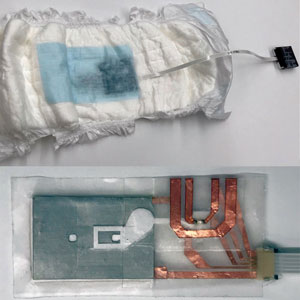
Researchers have figured out a way to embed an autonomous sensor device in adult briefs to better detect urinary tract infections.
UTIs are responsible for nearly 10 million doctor visits each year in the United States and can be a major source of additional diseases, especially for seniors, according to the National Center for Biotechnology Information.
“We have at least two big advantages here with our device,” said Babak Ziaie, a professor of electrical and computer engineering at Purdue University. “Because it’s autonomous, it doesn’t require the patient or caregiver to obtain urine samples, and it can help detect an infection in people who either aren’t able to communicate their symptoms, or they don’t show typical symptoms.”
Checking for a UTI typically involves testing a urine sample for bacteria and blood cells, which can be difficult to collect in individuals who wear briefs, the researchers note.
The bandage-sized device is disposable and has been tested with synthetic urine samples to accurately detect the infection better than commercial dipsticks.
Once exposed to urine, the battery in the sensor provides power to the device to check for nitrates, chemical compounds commonly associated with UTIs. The device then wirelessly sends the results via a smartphone to the patient, caregiver, and/or health care network, if required.
Researchers also expressed that their device improves accuracy in treating UTIs because it checks the status of the infection on a regular basis. The sensor increases the amount of data collected that caregivers can analyze to track the status of the infection over time.
The researchers worked with the Purdue Research Foundation Office of Technology Commercialization to patent the technology. The team is currently looking for additional partners and those interested in licensing the technology.
From the August 2019 Issue of McKnight's Long-Term Care News




